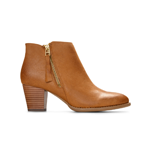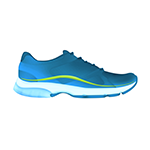
How to Stretch After a Walk

Whether you’re warming down after your morning run or enjoying a stroll in the park with a friend, walking is excellent for heart health and mobility. Inactive adults are at a higher risk for heart disease, stroke, depression, and other health issues, and walking for pleasure, exercise, or transportation is an excellent way to supplement your healthy lifestyle.1
Even with the best orthotics, you may find yourself stiff a few hours after a walk or wake up with a few new aches and pains the following day, you should add some static stretching to your post-walk routine. In this article, we’ll explore which muscles we use while walking and teach you how to stretch properly with easy flexibility training options to avoid stiffness, soreness, and injuries.
Which Muscles Do We Use to Walk?
A physical therapist divides humans’ walking patterns—or “gait cycles”—into two phases:2
- The stance, when your right or left foot is planted on the ground, makes up about 60% of our gait cycle.
- The swing is the leg movement between stances, which comprises the other 40% of the walking pattern.
Both phases depend upon the function of a few key muscle groups: the legs, feet, glutes, back, and core.
Our legs, feet, and back are clear participants in the gait cycle—they keep us upright and perform most of the walking process. But, our core and glutes are important, too. As we walk, our oblique muscles help keep our legs parallel instead of pigeon-toed, and the swing movement requires glute engagement to push our legs forward.
Naturally, all of the muscles we use while walking are liable to become stiff or sore. But, regular stretching can help relieve a tight muscle.

Post-Walk Stretches
Stretching can alleviate stiffness or soreness after a walk, but they’re also an excellent preventative measure. Let’s explore how to stretch the muscles that drive your walk.
#1 Light Lunges
If you’re experiencing pain in the area where your thighs meet your abdomen, it’s time to learn how to stretch hip flexors and their surrounding muscles. Hip flexors are a muscle group that supports the legs and core during walking, and a dynamic stretch like light lunges are the answer to hip flexor tightness:3
- Start with your feet together.
- Slide your right foot back, begin bending your left knee, and slowly lower your body as if you’re going to take a knee.
- Sink as low into the lunge as you can while keeping your hips facing forward and your back straight.
- Hold the position for five seconds, stand, switch legs, and repeat four to five times.
#2 Straddle Splits
Another great hip flexor and hamstring stretch that you can add into your stretching routine is a straddle split. While regular stretching will improve your flexibility, don’t worry about making your legs into a straight line just yet—instead, focus on pushing your right leg and left leg as far out as you can to feel the light burn of a good flexor stretch.
To perform a straddle split, sit on the floor with plenty of space around you. Start with your legs straight out in front of you, and use your hands to progressively move your legs as far apart as they’ll go. Hold the position for a few seconds, return to the starting position, and repeat four to five times.

#3 Quad Stretches
Our quads—the muscles on the fronts of our thighs—are crucial to the gait cycle, and they’re quite susceptible to muscle tension. Stretch them out with a tried-and-true quad stretch:
- Stand with your feet together and hold onto a stationary chair, wall, or sofa for balance.
- Behind your back, grab your right foot with your right hand and pull your foot as close to your bottom as you can.
- Once you can’t pull your foot any closer—or once your foot and bottom are touching—hold the position for a few seconds before releasing, returning to the starting position, and switching to the other foot.
While you can repeat all of these stretches as often or for as many reps as you’d like, the quad stretch might provide so much relief that you’ll want to do it for thirty straight minutes.
#4 Calf Lowers
The calf muscles—located on the backs of our lower legs, opposite our shins—bear the brunt of the gait cycle. They help raise our feet when we start our swing, and they control our footfalls as we enter the stance. If you’re new to a regular walking routine, you’ll likely experience some calf soreness.
To do a calf stretch, stand on a staircase (with a handrail for support) or a block that’s at least a few inches tall. Stand on the stair or block with your toes planted firmly and your arch and heel hanging over the side.
Using a wall or handrail for support, slowly lower yourself until your heels touch the next step or the ground, and feel that glorious calf stretch. Raise up and repeat as many times as you’d like.
#5 Toe Pointing
Foot soreness is part and parcel of any exercise routine. While you should make sure you’re wearing supportive lace up or slip on sneakers for all physical activity, you might still experience foot pain after your daily walk.
Luckily, simply pointing and flexing your toes while you’re in a seated position can relieve pain and stretch the tops and bottoms of your feet. If you need extra foot support during this exercise, try sitting on the floor while pointing and flexing your toes.
#6 Toe Touches
Toe touches are an all-around stretch that can foster flexibility and soothe some of your hardest-worked muscles. While you may not be able to touch your toes confidently or consistently, frequent stretching will help you achieve that goal.
Simply stand with your legs together and hinge at the waist with your left arm and right arm outstretched to try to touch your toes. Pay special attention to your legs during this exercise, particularly your hamstrings and calves. You should feel a satisfying stretch all the way down the backs of your legs while you reach for your toes.
Hold the position for as long as you’d like, but make sure to keep your knees soft and take a short rest between each rep to prevent lightheadedness.
#7 Ankle Rolls
Our ankles and feet are made up of nearly-countless small bones, and all of the joints and cartilage in our foot and ankle bones create many possible pain points. After your walk, try this gentle stretch on your ankles to both relieve soreness and prevent future injuries.
Simply roll each ankle in a few circles, alternating between clockwise and counterclockwise rotations. You can perform this exercise practically anywhere:
- Sitting with your legs straight out in front of you
- Sitting in the straddle split stretch
- Sitting normally in a chair, crossing each leg to lift your foot off the floor
- Standing on one foot and alternating between each ankle
#8 Noodle Knees
Our knees are crucial for maintaining an upright posture, and after a long walk or a whole day of standing, knee pain can sometimes rear its ugly head. While it can be difficult to stretch the right knee and left knee, try a stretch that simply takes the weight off of them: noodle knees.
Find a seating position where your legs can dangle without your feet touching the floor—a barstool in your kitchen, a tall chair, the edge of your bed, or the arm of a couch. Simply relax your knees, allowing them to dangle without any pressure on the joint. Try lightly swinging your legs to relieve further pressure.
#9 Cat-Cow Stretch
Even with the best walking shoes for men or women, you could still experience minor back pain. After your walk or at the end of a long day, the cat-cow stretch will relieve the tension in a tight lower back:
- Grab a towel or yoga mat and find a spot on the floor with plenty of space.
- Enter a tabletop position on all fours, keeping your shoulders rolled away from your ears, elongating your neck, and tucking your tailbone.
- Slowly drop your waist and arch your back while lifting your head and chest. Hold the position for two seconds before transitioning.
- Tuck your tailbone and slowly arch in the opposite direction, engaging your core. Hold the position for two seconds before repeating step 3.
The cat-cow stretch can provide relief, improve lower back mobility, and prevent future back injuries—what’s not to love?
#10 Seated Pigeon Stretch
For a stretch that is all about your glutes, try the seated pigeon.
Sitting in a chair, cross one leg over the other so that your shin, calf and thigh form a plus sign. Gently hinge at the waist until you feel your glutes stretch on your crossed leg side. Once you’ve found a feel-good burn, hold the position for a few seconds before switching legs and repeating the process.
Even if you haven’t walked in a few days, this is an excellent stretch for relieving upper leg and lower back soreness.
Put Your Best Foot Forward with Vionic Shoes
Whether shopping for walking shoes gave you a motivational nudge or a friend’s recent invite to a local walking trail inspired you, starting a new walking routine is excellent for your health and wellness. But, if you’re feeling tense or tight after your first few strolls, try these ten stretches during your post workout recovery to relieve stress and avoid muscle injuries on multiple muscle groups.
But, don’t forget that appropriate footwear and supportive orthotics are crucial to healthy walking and standing.
Vionic Shoes is here to keep your arches supported, your heels stable, and your toes cushioned while you walk and stand. Our Vio-Motion footbed technology is revolutionizing the world of orthotics. But, the best part is that all of our shoes are fashion-forward. So, you can say goodbye to clunky and frumpy, and hello to stylish support for any outfit.
Whether you’re looking for strappy sandals or comfy slip-on sneakers for your next stroll around the block, Vionic has you covered.
Sources:
- Centers for Disease Control and Prevention. More People Walk to Better Health. https://www.cdc.gov/vitalsigns/walking/index.html
- American Bone Health. The Gait Cycle. https://americanbonehealth.org/exercise/the-mechanics-of-walking/
- Medline Plus. Hip Flexor Strain – Aftercare. https://medlineplus.gov/ency/patientinstructions/000682.htm










